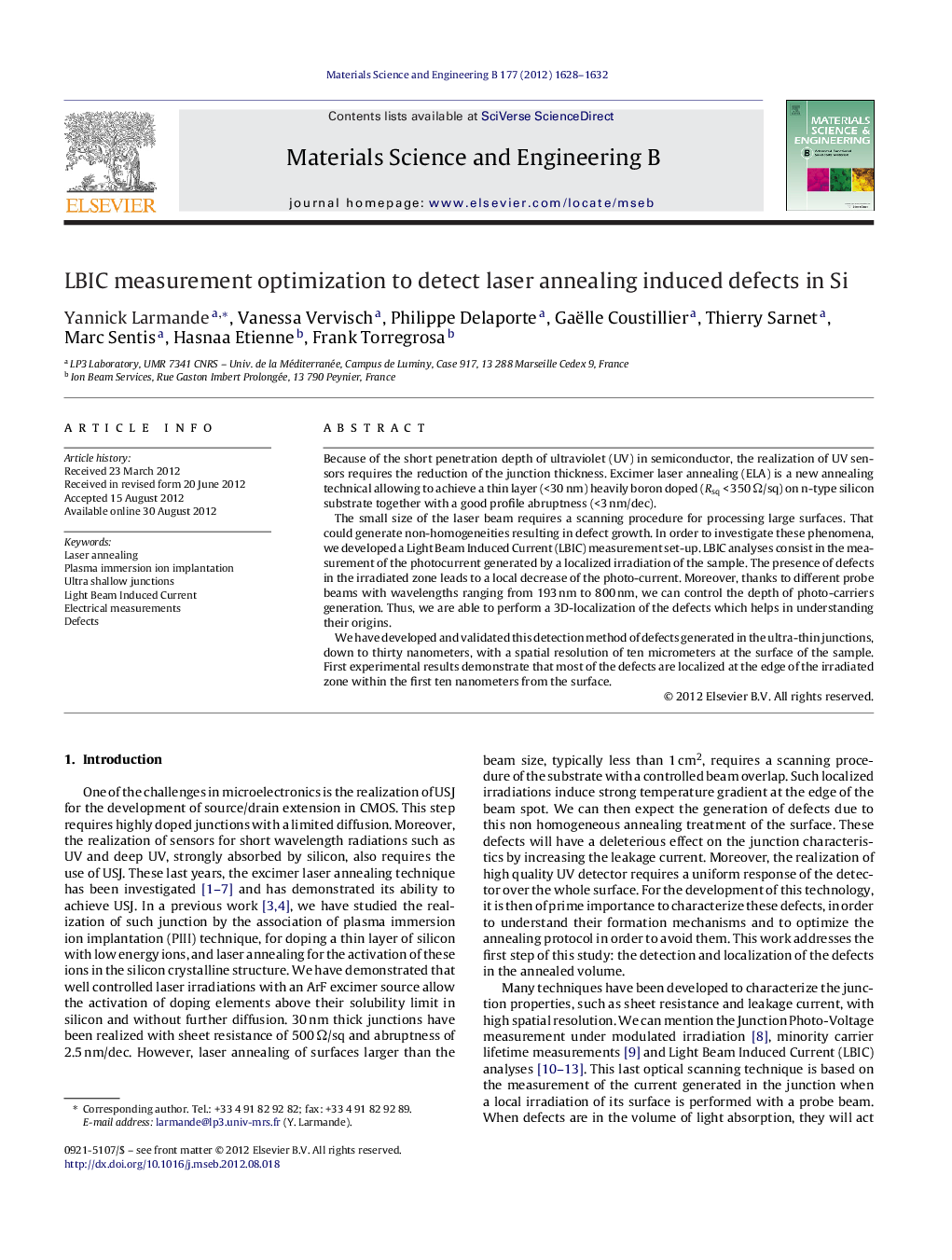| Article ID | Journal | Published Year | Pages | File Type |
|---|---|---|---|---|
| 1529092 | Materials Science and Engineering: B | 2012 | 5 Pages |
Because of the short penetration depth of ultraviolet (UV) in semiconductor, the realization of UV sensors requires the reduction of the junction thickness. Excimer laser annealing (ELA) is a new annealing technical allowing to achieve a thin layer (<30 nm) heavily boron doped (Rsq < 350 Ω/sq) on n-type silicon substrate together with a good profile abruptness (<3 nm/dec).The small size of the laser beam requires a scanning procedure for processing large surfaces. That could generate non-homogeneities resulting in defect growth. In order to investigate these phenomena, we developed a Light Beam Induced Current (LBIC) measurement set-up. LBIC analyses consist in the measurement of the photocurrent generated by a localized irradiation of the sample. The presence of defects in the irradiated zone leads to a local decrease of the photo-current. Moreover, thanks to different probe beams with wavelengths ranging from 193 nm to 800 nm, we can control the depth of photo-carriers generation. Thus, we are able to perform a 3D-localization of the defects which helps in understanding their origins.We have developed and validated this detection method of defects generated in the ultra-thin junctions, down to thirty nanometers, with a spatial resolution of ten micrometers at the surface of the sample. First experimental results demonstrate that most of the defects are localized at the edge of the irradiated zone within the first ten nanometers from the surface.
► LBIC tool using an UV wavelength as source has been developed. ► We have highlighted defects generated by the laser annealing process. ► Defects are localized at the edge of laser beam. ► A mapping of an annealed area has been realized. ► The mapping shows that the defects can be corrected by a single laser impact.
